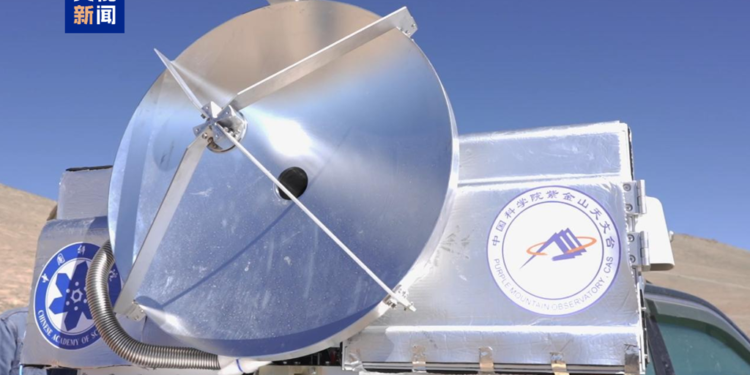A joint experimental team, led by the Purple Mountain Observatory (PMO) of the Chinese Academy of Sciences (CAS), has achieved a pioneering success in terahertz wireless communication on the Qinghai-Xizang Plateau.
This is the first instance globally where high-sensitivity superconducting receiver technology has been applied to long-distance wireless communication, successfully transmitting high-definition video signals over a distance of 1.2 kilometers.
The experiment was carried out at an altitude of over 4,000 meters at a submillimeter-wave astronomical observation site in Qinghai Province, northwest China. Using just 10 microwatts of transmission power, a fraction of the power used by typical mobile phone base stations, the team successfully received HD video through a superconducting terahertz receiver despite the weak signal.
Li Jing, a PMO researcher, explained that terahertz communication vastly expands spectrum resources compared to microwave communication, likening it to widening a road from two lanes to six or eight. She noted that superconducting detection technology boosts efficiency, allowing signals to travel greater distances with minimal loss.
Terahertz (THz) radiation consists of electromagnetic waves with frequencies between 0.1 and 10 THz, positioned between microwaves and light in the spectrum. It is seen as an essential resource for future communications.
Long-distance transmission of terahertz signals faces significant challenges due to signal attenuation. Chinese researchers have been working on terahertz astronomical detection technologies since the 1990s. This experiment sets a new benchmark for long-distance terahertz wireless communication in the 0.5 THz frequency range.
Shi Shengcai, a CAS academician, emphasized China’s strengths in this field, pointing to the Qinghai-Xizang Plateau as an ideal location for such experiments and highlighting the country’s progress in superconducting detector technology over the past few decades.
Furthermore, the success of this experiment shows the potential of superconducting receivers for long-range terahertz communication, opening new possibilities for space-based and air-to-ground communication systems with large data capacities, according to the researchers.
Related Posts

















